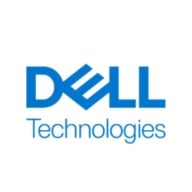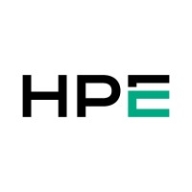

Dell PowerEdge MX-Series and HPE Synergy are competing in the server and infrastructure solutions category. While Dell PowerEdge MX-Series focuses on performance and scalability, HPE Synergy emphasizes flexibility and resource composability. Dell PowerEdge MX stands out for its density and manageability, but if flexibility and composability are prioritized, HPE Synergy holds the upper hand.
Features: Dell PowerEdge MX-Series offers a high-density setup with 40 logical cores and 400GB of RAM, supporting up to 25 VMs efficiently. Its iDRAC tool allows detailed power control, enhancing manageability and supporting cyber-resilient architecture. Meanwhile, HPE Synergy's composable infrastructure enables dynamic resource allocation, central management via HPE OneView simplifies tasks, and its flexibility allows reuse of resources across different workloads.
Room for Improvement: Dell PowerEdge MX-Series could enhance the boot time and improve networking options and VLAN configuration. Addressing the Java applet console requirement and improving the consistency of support would be beneficial. HPE Synergy needs better third-party hardware integration and faster networking capabilities. Streamlining OneView's complexity, simplifying firmware updates, and enhancing storage sharing across frames are also areas for improvement.
Ease of Deployment and Customer Service: Dell PowerEdge MX-Series generally receives positive feedback for ease of deployment, but experiences with technical support vary, sometimes involving delays. HPE Synergy is primarily deployed on-premises, with support considered acceptable, though occasionally complex. Improving customer guidance for deployment and ensuring reliable support are areas where Synergy could benefit, while Dell should work on support availability and promptly addressing customer issues.
Pricing and ROI: Dell PowerEdge MX-Series offers competitive pricing, particularly with negotiated discounts or via the second-hand market, making it attractive for those seeking cost efficiency. Its reliable performance contributes to a strong return on investment. HPE Synergy, though pricier, justifies its cost with a single-console management benefit and composable infrastructure. It provides competitive offers on large purchases, and while more expensive than Dell, its integrated solution supports investment value.
We utilize AI technology with Dell PowerEdge M through a module known as CloudIQ, which provides automation and takes care of predictive analysis and reporting.
They provide excellent help when needed.
Regarding technical support from Dell, I find them to be one of the best support providers in the industry right now.
I would rate the technical support from HPE Synergy, and for all other solutions, as very good and appreciable with a score of nine out of ten on a scale from one to ten.
Regarding scalability, I can scale up to 64 enclosures, and each enclosure can hold around 7 blades.
There are differences in security configurations, particularly in SNMP and SNMP3, between HP ILO and iDRAC.
In terms of potential room for improvement regarding Dell PowerEdge M, I would want to see something such as dense nodes and additional storage, as well as multiple network connectivity on the blades.
Currently, it supports only two drives in the blade server, which can be limiting.
Sometimes Dell may be a little costlier, but that is considering the services and solutions we are providing, which can be adjustable.
Pricing in the blade server market is very competitive, with HPE offering a competitive price.
The ease of troubleshooting and managing through remote access, using tools like iDRAC, significantly saves me time.
If the customer is changing their network infrastructure from 1GB or 10GB to 25GB or 400GB, the MX7000 fabric switch can support that.
It offers significant compute power in approximately ten rack units, making it practical for workload optimization.


| Company Size | Count |
|---|---|
| Small Business | 12 |
| Midsize Enterprise | 3 |
| Large Enterprise | 10 |
| Company Size | Count |
|---|---|
| Small Business | 30 |
| Midsize Enterprise | 15 |
| Large Enterprise | 56 |
Dell PowerEdge MX-Series offers high-density server solutions for virtualization and compute tasks, ensuring efficient handling of VMs and scalable infrastructure.
Designed for high scalability and reliability, Dell PowerEdge MX-Series integrates iDRAC and OpenManage for centralized management and user-friendly control. It supports on-premises deployments with blade servers, suitable for database and application hosting. Users appreciate its performance, power control, and infrastructure expansion capabilities. It delivers robust security, efficient consolidation, and cost-effectiveness in dense setups.
What are the key features?Organizations utilize Dell PowerEdge MX-Series for a variety of tasks, including virtualization, web services, and compute-heavy processes. It's deployed in sectors like solar power SCADA systems and private cloud automation, supporting hyper-converged infrastructures and SQL applications. Cluster management enhances computation across multiple applications, making it a valuable resource in various industries.
HPE Synergy, the first platform built from the ground up for Composable Infrastructure, offers an experience that empowers IT to create and deliver new value instantly and continuously. It is a single infrastructure that reduces operational complexity for traditional workloads and increases operational velocity for the new breed of applications and services. Through a single interface, HPE Synergy composes physical and virtual compute, storage, and fabric pools into any configuration for any application. As an extensible platform, it easily enables a broad range of applications and operational models such as virtualization, hybrid cloud, and DevOps. With HPE Synergy, IT can become not just the internal service provider but the business partner to rapidly launch new applications that become the business.
We monitor all Blade Servers reviews to prevent fraudulent reviews and keep review quality high. We do not post reviews by company employees or direct competitors. We validate each review for authenticity via cross-reference with LinkedIn, and personal follow-up with the reviewer when necessary.